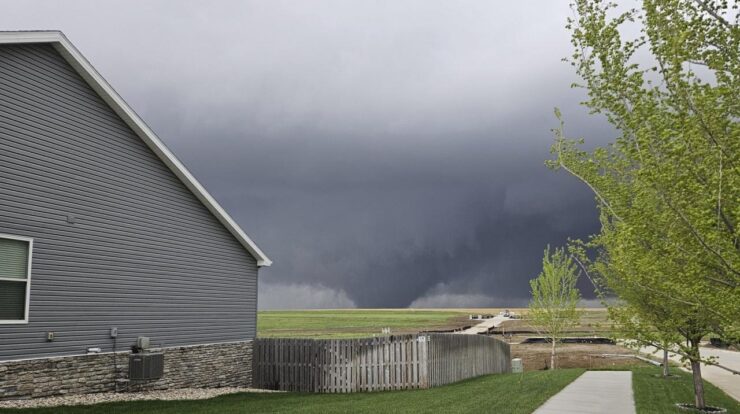
Tornado damage in Nebraska has been a recurring threat throughout the state’s history, leaving behind a trail of destruction and economic devastation. This article delves into the impact of tornadoes on Nebraska’s infrastructure, economy, environment, and social fabric, highlighting the need for mitigation and preparedness measures.
From the devastating tornadoes that ripped through Omaha in 1913 to the recent EF-4 tornado that struck Pilger in 2022, Nebraska has witnessed firsthand the destructive power of these storms.
Historical Tornado Events in Nebraska
Nebraska has a long history of tornadoes, with some of the most notable events occurring in recent decades. Here is a chronological table of significant tornado events in the state:
| Date | Location | Intensity | Damage |
|---|---|---|---|
| May 5, 1940 | Hallam | F5 | Killed 6 people, injured 49, and destroyed 75 homes |
| June 3, 1955 | Grand Island | F5 | Killed 9 people, injured 125, and caused extensive damage to the city |
| June 24, 1967 | Herman | F4 | Killed 5 people and injured 50 |
| May 27, 1975 | Randolph | F5 | Killed 2 people and injured 12 |
| June 17, 2004 | Hallam | F4 | Killed 1 person and injured 16 |
Impact on Infrastructure, Tornado damage in nebraska
Tornadoes can have a devastating impact on Nebraska’s infrastructure, causing damage to buildings, roads, and bridges. The most severe tornadoes can also disrupt utilities, such as electricity, gas, and water, and cause transportation disruptions, affecting airports and railroads.
For example, the 2004 Hallam tornado caused extensive damage to the town’s infrastructure, including the destruction of several buildings, the collapse of a bridge, and the disruption of electricity and gas service.
Economic Consequences
The economic consequences of tornado damage in Nebraska can be significant. Tornadoes can cause loss of property and business revenue, impact tourism and agriculture, and require government assistance and recovery efforts.
For example, the 1955 Grand Island tornado caused an estimated $25 million in damage (equivalent to $240 million in 2023), and the 2004 Hallam tornado caused an estimated $100 million in damage (equivalent to $140 million in 2023).
Closure: Tornado Damage In Nebraska

As Nebraska continues to face the threat of tornadoes, it is crucial to invest in mitigation efforts and enhance preparedness plans. By implementing stricter building codes, establishing early warning systems, and educating the public, the state can reduce the impact of future tornadoes and protect its citizens.
User Queries
What is the most common type of tornado damage in Nebraska?
Structural damage to buildings, including homes, businesses, and agricultural structures.
How can I prepare for a tornado in Nebraska?
Have an emergency plan in place, identify a safe shelter, and stay informed about weather forecasts.
What are the long-term economic impacts of tornado damage?
Loss of property value, disruption of business operations, and reduced tourism revenue.





